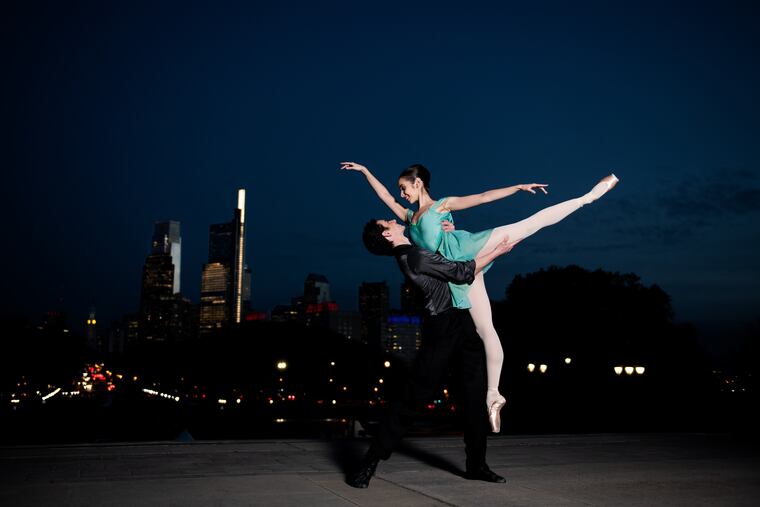‘Dancing With Gershwin’ is a pleasing three-part program from Philadelphia Ballet
Tchaikovsky, Stravinsky, and Gershwin — all choreographed by George Balanchine — make “Dancing With Gershwin” a splendid watch at the Academy of Music

Dancing With Gershwin should really be called Dancing with Tchaikovsky, Stravinsky, and Gershwin, since only one of the works in Philadelphia Ballet’s current program is performed to music by that master of the Great American Songbook. Yet, these very different pieces — all choreographed by George Balanchine — made for a splendid night at the Academy of Music, emphasizing the versatility and skill of both Balanchine and the company’s ever-more-impressive dancers.
Ballet Imperial is Balanchine’s tribute to the splendors of pre-Revolutionary Russia, represented by the classical traditions he absorbed as a young dance student. The Academy is the perfect setting for this glittering gem of a ballet, which has just been added to the company’s repertoire. The (uncredited) costumes put the women in short tutus and sparkling tiaras, while the men’s tunics are richly colored velvet.
Playing Tchaikovsky’s Piano Concerto No. 2 under the baton of Beatrice Jona Affron, the ballet’s orchestra sounded first-rate, and soloist Alexander Timofeev was superb. Credit for the breathtaking unison work of the 24 dancers goes to the dancers of course, but also to stager Colleen Neary and to artistic director Ángel Corella’s continuing emphasis on technique. The male dancers, in particular, have acquired skills that rival Corella’s own. On opening night, the trio of Sydney Dolan, Ashton Roxander, and Peter Weil were especially light-footed, and Dayesi Torriente and the estimable Jack Thomas were well matched.
Full disclosure: I’m a sucker for Agon, a 1957 work that still seems radical today, which Philadelphia Ballet performed brilliantly. This is one of Balanchine’s famous “leotard ballets” – plotless, with no sets or props, the dancers wearing simple practice clothes (black leotards and white tights for the women, white T-shirts and black tights for the men).
Stravinsky’s score is largely atonal and rhythmically complex; Balanchine complements this music with traditional and nontraditional movements such as turned-in feet, shoulder shrugs, hips thrust forward or backward. Oksana Maslova and Sterling Baca were outstanding in the work’s signature pas de deux, where Baca’s assured partnering and Maslova’s exceptional flexibilityallowed them to push seemingly impossible positions to new extremes. Also notable was the trio of Thays Golz, Jack Sprance, and Peter Weil.
The star of the evening’s final number, Who Cares?, was dancer Arián Molina Soca. The medley of 16 hits from the 1920s and ‘30s, composed by George Gershwin and orchestrated by Hershey Kay, featured the witty playing of pianist Martha Koeneman. Peter Farmer’s scenic design — of a stylized New York City skyline — and Janet Groom Campbell’s costumes (short, frothy dresses; with the men in tuxedo pants and vests, their shirtsleeves rolled up and bow ties untied) helped set the mood — alternating ebullience with jazz-inflected romance.
Molina Soca channeled the suavity of Fred Astaire — and James Bond, while impressing viewers with his enormous jumps and controlled landings. All three of his duets (performed with Lucia Erickson, Nayara Lopes, and Mayara Piñeiro) were stunning. But the deep emotion underlying “The Man I Love” (danced with Lopes) brought down the house.
Philadelphia Ballet in “Dancing With Gershwin.” Through March 19 at the Academy of Music. 240 S. Broad St., $25-$238, 215-893-1999 or kimmelculturalcampus.org